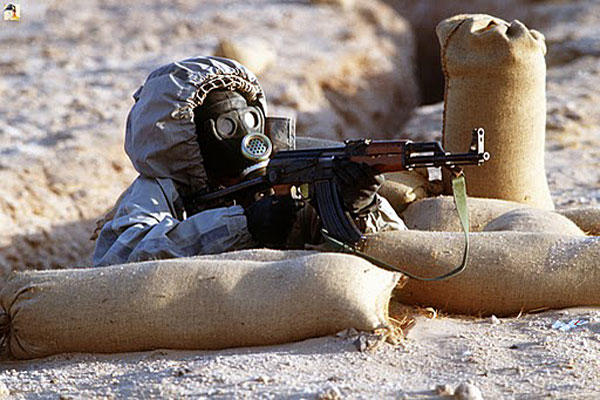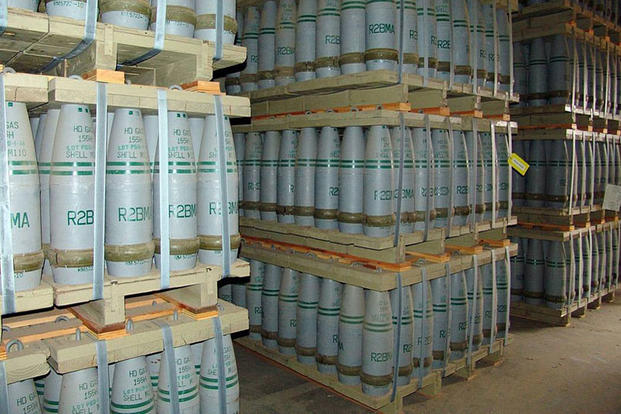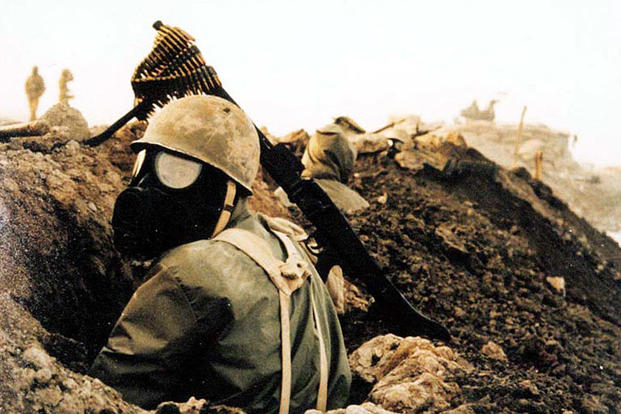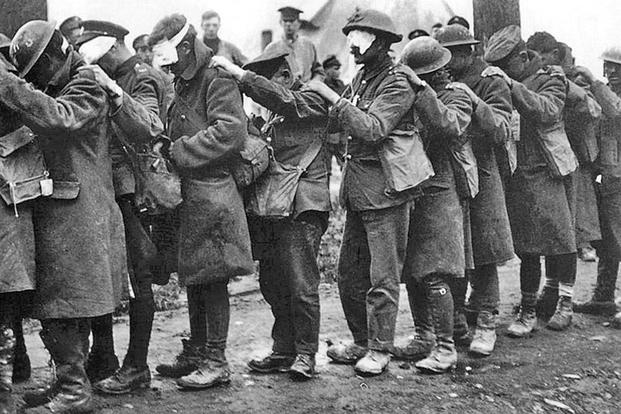Joseph V. Micallef is a best-selling military history and world affairs author, and keynote speaker.
A little more than a hundred years ago, on April 22, 1915, in what came to be called the Second Battle of Ypres, the German Army unleashed the first large-scale use of poison gas as a weapon of war on the Western Front.
This was not the first time that gas had been used in World War I; the Germans had already put it to use against the Russian Army in Poland a few months earlier.
Following a two-day bombardment, the German Army simultaneously released 168 tons of chlorine gas over a four-mile front. The Germans had hauled 6,000 gas cylinders, each weighing 90 pounds, to the front line. On a prearranged signal, the canisters were opened, releasing their deadly contents.
The panic that resulted opened a four-mile gap in the Allied lines.
The First Canadian Division was stationed at St. Julien, on the flank of the gap. In what was considered a suicide mission, they were ordered to counterattack and prevent the Germans from advancing through the opening.
Lacking gas masks, they improvised by urinating on cloths and holding them to their faces. The ammonia in the urine neutralized the chlorine gas. The Canadians' victory that day marked a second milestone: It was the first time that soldiers from the new world had defeated soldiers from the old on a European battlefield.
For all of its deadly effects, chlorine had shortcomings as a weapon of mass destruction. It was easily dispersed by the wind, limiting its effects. To compensate, the Germans developed sulfur mustard, otherwise known as mustard gas, which they used at the Third Battle of Ypres in July 1917.
The gas had a yellow color and smelled of mustard plants and garlic, hence its name. Mustard gas was heavier than chlorine gas, less likely to be dispersed by wind and its effects on the battlefield persisted longer. It has no known uses beyond being a weapon of mass destruction.
In total, more than a million people were killed or injured as a result of contact with poison gas during World War I.
When World War II broke out, both sides stockpiled poison gas, fearing a return to the practice of World War I.
The Italians used mustard gas during the Abyssinian campaign in 1935, the Polish Army used mustard gas grenades during the Nazi invasion in 1939, and there were reports that the Japanese used poison gas in Manchuria.
Winston Churchill authorized the use of gas against German troops if they invaded Great Britain. He also considered using mustard gas bombs against German cities but abandoned the idea.
Adolf Hitler weighed using gas during the siege of Leningrad, but also opted not to employ it.
Since World War II, there have been sporadic uses of mustard gas and other chemical agents on the battlefield. Egypt was accused of using poison gas, possibly mustard gas, during the civil war in North Yemen between 1963 and 1967.
There were also unsubstantiated reports that Vietnam used phosgene, another WWI era poison gas, against Cambodian resistance forces, hiding along the Thai border, during Vietnam's 1984-85 Cambodian intervention that toppled Pol Pot.
Both South African troops and Cuban troops were accused of using chemical weapons during the Angolan Civil War.
It is Iraq and Syria, however, that are responsible for the lion's share of poison gas use since the end of World War II.
Saddam Hussein used a variety of chemical weapons, including mustard gas, against Iranian forces during the Iraq-Iran war. Hussein also used poison gas against the Kurdish village of Halabja, and during the al-Anfal campaign against Kurdish civilians and other minorities in Northern Iraq. There were also unconfirmed reports that he used poison gas against Shiite rebels in the Shat al-Arab marshes in the Persian Gulf.
Chemical weapons have also been used by Syrian military forces, loyal to the Assad government, against various Syrian rebel groups and civilians.
In August 2012, U.S. President Barack Obama warned Syrian President Bashar al-Assad that the use of chemical weapons by his forces would represent a red line for the U.S. Unfortunately, the Obama administration's threat proved to be hollow and was quickly forgotten when evidence of Syria's use of chemical weapons emerged.
In September 2013, Russia, in collaboration with the United States, brokered an agreement under which Syria agreed to turn over its chemical weapons for destruction under U.N. supervision. These weapons amounted to around 1,000 tons of sarin, mustard gas and VX.
Chlorine, the original WWI era poison gas, was exempted since chlorine gas has widespread use in industry. Many municipal waterworks, for example, uses liquid chlorine gas to chlorinate water supplies.
Despite the agreement, however, there have been widespread reports that the Assad government has used canisters of chlorine gas in the barrel bombs that it uses to target civilians. There have also been unverified reports that the Assad government retained some stocks of sarin and VX gas.
Poison gases, not surprisingly, are popular among terrorist organizations. They are the cheapest and easiest weapons of mass destruction to produce. The Japanese group Aum Shinrikyo used sarin gas in an attack in Matsumoto, Japan, on June 27, 1994. The following year, they released sarin gas into the Tokyo subway system.
Russian Chechen and various Sunni jihadist groups in Iraq, including the Islamic State, have exploded tanks of chlorine gas, including blowing up tanker trucks full of liquid chlorine, as improvised weapons of mass destruction.
In addition, according to Pentagon sources, the Islamic State has been producing and stockpiling mustard gas since 2015.
There have been reports from Kurdish and other sources that the Islamic State has fired artillery shells and mortar rounds that contained mustard gas. Follow-up tests, however, have proven to be inconclusive.
Nonetheless, Sleiman Daoud al-Atari, the recently captured head of Islamic State's chemical weapons program, has admitted to U.S. interrogators that the Islamic State has amassed a stockpile of mustard gas, which it intends to deploy in the upcoming battle of Mosul.
On Sept 12, 2016, U.S. warplanes destroyed a pharmaceutical factory in Mosul that U.S. Central Command believes had been converted into a chemical weapons manufacturing facility. There have also been persistent reports that the Islamic State has been working on developing other chemical agents in laboratories at the University of Mosul.
Mustard gas can be used both as an offensive weapon against advancing troops and, in large quantities, to create area denial zones that prevent the advance of Iraqi troops and force them into pre-selected attack routes set up as kill zones.
In a briefing to the Pentagon, Air Force Col. John Dorrian confirmed that U.S. forces anticipate that Islamic State fighters will use mustard gas, and possibly other chemical weapons, during the Battle for Mosul. He also confirmed that the Islamic State has dug tunnels to enable them to attack rear areas of the Iraqi forces. The U.S. has already distributed some 50,000 kits of "personal protective gear" to Iraqi and Kurdish forces.
The Shiite militias, interestingly enough, do not have protective gear in the event of a chemical weapons attack, a factor that may limit their involvement in the Battle of Mosul. Iran, however, is believed to have such gear and could, in theory, supply it if it becomes necessary. Such an action, however, would further highlight Iran's role in arming the Shiite militias.
With the exception of the Iraq-Iran war and the civil war in Syria, poison gas in general and mustard gas in particular has been largely absent from post-WWI military conflict. After an absence of almost a century, mustard gas is about to return to the modern battlefield.
































